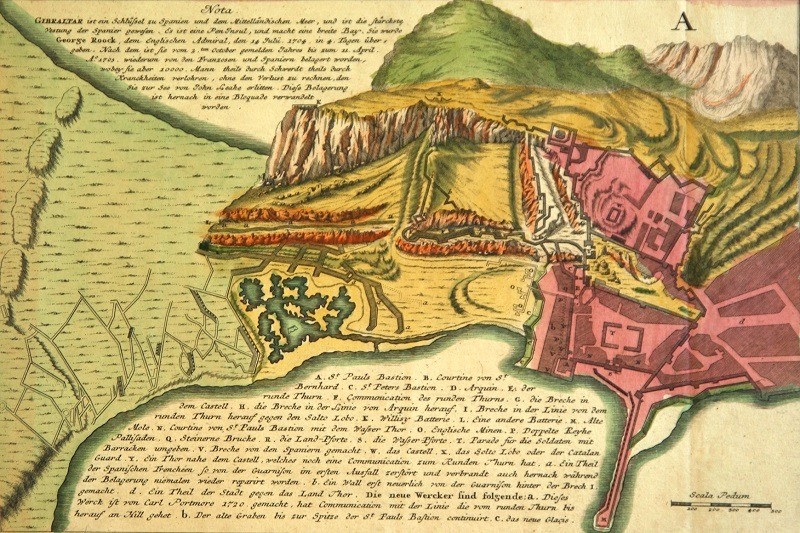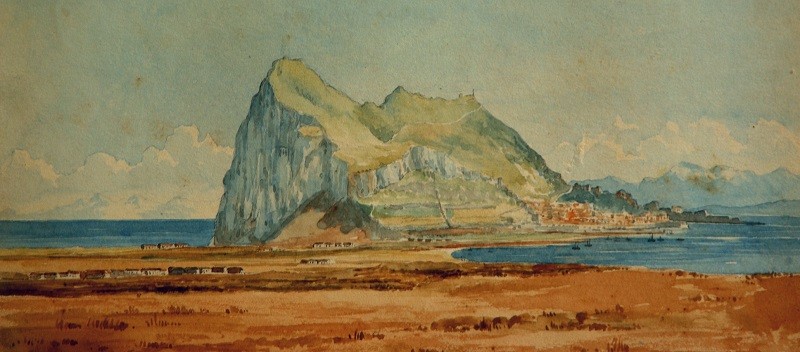The Isthmus


The Isthmus
The following text is an extract from the book "Gibraltar at the end of the Millennium" by Clive and Geraldine Finlayson:
The isthmus which links the Rock with mainland Spain is, in geographical terms, a tombolo. The term defines a process which we can describe as follows. At some point in the past, probably around five thousand years ago, Gibraltar was probably separated from the mainland by a shallow stretch of sea which joined the Mediterranean with the Bay. Prevailing currents from north-east to south-west then began to drift sand towards the Rock from the Guadiaro area, creating a series of beaches and gradually a sand spit which coiled round the Spanish hinterland. This longshore drift continued southwards, depositing more sand until the mass of the Rock acted as a barrier which prevented further drift, thus forming the tombolo. The sands on the northern end of the isthmus are the oldest, in keeping with the hypothesis that they were deposited first, and have been dated at around three thousand years ago. The sands in the south, closest to the Rock, are much younger and generally do not exceed one thousand years. So the isthmus as we know it is a recent phenomenon and may not have existed in its final form when Tarik landed on the Rock in 711 AD. Imagine, then, what it might have looked like 1,500 years earlier still, when the Phoenicians arrived. Many of the old authors mentioned the presence of many marine shells on the sands of the isthmus and cited this as evidence that this was formerly a seabed. You can still see these sands exposed, and many of these shells, in small areas of the isthmus. The shells would have been left there by receding seas in the intervening stages of the formation of the tombolo.
The latter stages of the natural process, which continued until the Prince of Hesse-Darmstadt landed on the isthmus on the 4th August 1704, involved the accumulation of sand on the eastern side of the isthmus as east winds piled it up. In fact Ayala, writing in 1782, describes the eastern side of the isthmus being of higher elevation than the west for this reason although much of it was flat and rarely higher than five feet above sea level. Prior to the Anglo-Dutch landings the isthmus was only slightly transformed into areas for cultivation by the local population of Gibraltar. These cultivations included vineyards but there was a lot of natural ground in which many wild herbs flourished. The ground was marshy and partly flooded in the wet season. Portillo talks of the “marismas de esta ciudad”, that is the swamps of this city.
The marshes and small lakes were the natural consequence of the process of formation of the isthmus. Initially some of the areas immediately near the sea would have formed coastal lagoons as the sand spit progressed, such as you might find today in the deltas of the Ebro or the Rhone, although on a smaller scale. The progressive sedimentation that occurred created the marsh with small lakes where the freshwater table was close to the surface. John White described the process in the late eighteenth century:
“It is likewise obvious that the Isthmus is daily gaining ground, especially on the West, which is a very level shoal coast. This is owing in part to the natural increase of vegetation, and partly by human industry and cultivation whereby the loose sand is retained and confined, and gradually converted into a solid and permanent soil. The Eastern Coast, indeed, seems incapable of suffering any improvement being a bed of hungry shelly sand, with very deep water within a short distance of low-water mark. But the Bay is perpetually adding to the shore fresh supplies of sea-weed and refuse of various kinds. The gardens also, and huts set up by fishermen all contribute to augment the surface and to keep back part of what is daily thrown up by the tides. Much sound ground has also been gained to the Isthmus of late years by the addition of rubbish from the large and extensive works that have been carried on in the garrison. A spacious piece of ground at the north end of the Inundation has been many years laid out and improved for a meadow, and produces excellent crops of hay. Beyond this, on the west shore, is erected a little town of huts by our Portuguese and Catalan fishermen; and near them several large tracts have long been occupied for gardens by Genoese, Catalans and other inhabitants of the town. These gardens before the last war with Spain were in a very flourishing condition. They were screened to the north and east by a thick plantation of reeds, (Arundo donax), which afforded an impenetrable shelter against those inclement winds. And as those winds continually drove the loose sand into those fences, the banks whereon they grew were thereby perpetually increased and grown to a considerable height exclusive of the reeds that grew on them. But on the declaration of the Spanish War, all these fences were, by order of the Governor levelled with the ground, lest they should afford covert for the enemy; and all the vines, fig-trees and other fruit trees were cut down and nothing suffered to remain of taller growth than common garden plants. Since that period the old gardens have again been improving and new ones inclosed; all of which add to the ornament and increase of the Isthmus notwithstanding the precarious tenure whereon they are held so near the fortifications of a garrisoned town. All these gardens are well supplied with water by means of that simple and excellent machine the Persian Wheel.”
Published: May 26, 2020
Other similar Virtual Museum
Other similar VM - Geology
Virtual Museum VM - Historical Notes from our Archive
historical notes from our archive a. e. serfaty
Published: April 04, 2020
Virtual Museum VM - Historical Notes from our Archive
Historical Notes from our Archive The Paint Supply Co.
Published: April 16, 2020
18-20 Bomb House Lane
PO Box 939,
Gibraltar
